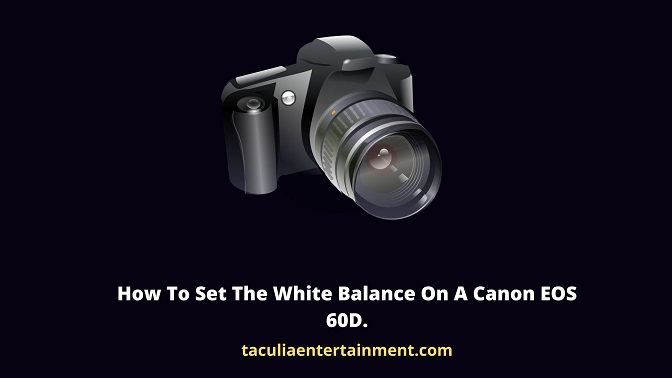
In this article, I am going to show you how to set the white balance on a Canon EOS 60D.
If you exercise patience and read this article to the end, you will understand how the color temperatures and the time of day to use any of them.
I will also show you the 2 camera methods you can use to get that perfect white balance on your Canon EOS 60D.
And so without much ado, let’s get into this article right away.
How to set the white balance on a Canon EOS 60D.
What is white balance?
To understand what is white balance on a Canon EOS 60D, you also need to understand the basic color temperatures which are also known as Kelvin.
The human brain has the natural ability to understand colors, no matter what conditions might seem to influence or affect them.
Humans see white or bright, night, day, etc, and thereby decode what the eyes see and interpret them to us exactly as it is.
Unfortunately, cameras of any brand or generation do not possess such ability that the human brain has,, hence, you as a human must tell the camera what is white, and at that particular point, the camera will see everything that relates to it.
What we are trying to explain above is therefore known as the white balance.
Color temperatures and time of day you should use them.
Below are the color temperatures (measured in kelvin) and the time of day you need to use them.
| Color temperature. | Time/light |
|---|---|
| 5500k | Mid-noon sun (no clouds) |
| 3200k | The light that’s warmer. |
| 7500k | The light that’s cooler. |
| 3200-2700k | Incandescent light. |
| 5500k | Flash. |
| 5500k | White light. |
It is the photographer or cameraman who is supposed to tell the camera the type of light conditions he is shooting with.
And it is only then that the camera will be able to understand the way it is supposed to reproduce the needed colors.
By using this technique called white balancing on the camera, you are simply telling the camera ‘hey! look! this is my white”. And once the camera understands that white correctly, it will start to read all other colors that relate to it at that particular point.
The 2 methods of setting a white balance on Canon EOS 60D.
Below are the 2 methods of setting a white balance on a Canon EOS 60D.
- The method provided in the camera.
- Using a third-party product to achieve your white balancing.
1. Method provided in the camera.
To achieve white balancing using the method provided by the camera, you have to use auto or set your color temperature to 3200k, if you are shooting with incandescent light.
But when you are shooting with white light, use auto or set the color temperature to 5500k which is equivalent to daylight settings.
Also, since there are different types of shades and cloudy conditions you are going to encounter in real life, it is recommended that you stick to auto settings because the other presets are going to give you undesirable images at times.
2. Using a third-party product.
There is some kind of complex situations a photographer or cameraman is going to run into while shooting on a daily basis.
There are approximately 10,000 different types of light in each location. If you happen to be in such places, the first method we treated above is not going to help you much, thus, you will require another setup tools that will give you an accurate white balance in your camera.
So, therefore, under the same lighting conditions, put in a white piece of paper in front of the camera. By doing so, you are simply telling the camera that this is white; now take a picture.
Once you have taken your picture, go to the menu and navigate to the “custom white balance” settings.
Select the option and you will see the picture you took displayed. Now press the set button and you will see it saying “use WB data from this image for custom WB”.
Press ok.
Now go to the white balance settings and set it to custom white balance. Once you return back, you will see that the image is much more neutral and all the colors are just the way they are supposed to be.
Make sure you use these settings whenever you have a yellowish, reddish, bluish, etc picture quality due to the lighting condition where you are shooting.




